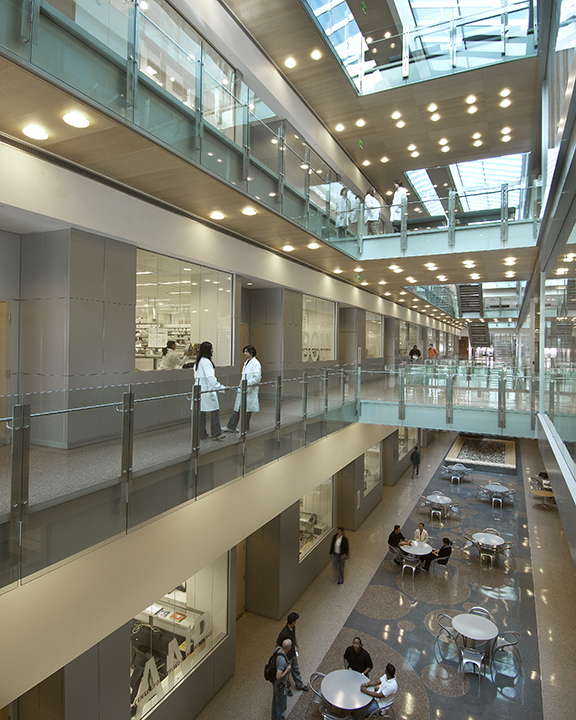Laboratory Design
Laboratory Design
Lord Aeck Sargent is renowned for creative solutions to complex laboratory projects, engaging in interactive collaboration between owners, users, architects, and engineers. Our in-house laboratory and equipment planners understand the intricacies involved in developing all types of research, teaching, and industrial labs. With millions of completed square feet in laboratory space, Lord Aeck Sargent leads in innovative science facility design and strives to create environments that enhance interaction and collaboration while maintaining the highest attainable level of design, technology, and safety.
Research laboratories encompass an exciting array of buildings and environments to house and support a diverse range of research endeavors. While the nature of work that takes place within these labs varies significantly, common to each is the need to establish highly collaborative, interdisciplinary settings within a technologically sophisticated yet flexible framework—one that will adapt and evolve as initiatives and equipment needs change over time.
At the core of biomedical research is the drive to accelerate the evolution of scientific discovery into beneficial applications. The planning and design of these labs should support interdisciplinary, team-based research—encouraging collaboration and meaningful interaction through spaces that foster a sense of place for the research community. Technology is integral to research, and it is essential that these labs provide for the integration of current and future technologies to support sophisticated computational research and equipment and to seamlessly interconnect the research, academic, and clinical environments.
Achieving excellence in the STEM disciplines is essential to the continued strength of our nation as a leader and innovator in the increasingly competitive worldwide market. As such, STEM labs are increasingly becoming more important for their power to captivate and inspire students. These labs mandate a robust and flexible infrastructure, and the successful integration of technology is essential—expanding and enabling the environment for learning beyond the classroom walls and into a wide variety of spaces and settings.
Diagnostic, testing, and R&D laboratories —including corporate and government/ public sector work—require an in-depth knowledge and understanding of the intensive process and equipment driven work that takes place within these facilities. A host of unique needs are frequently mandated by these projects, including extensive workflow coordination, aggressive and critical schedule parameters and enhanced safety and regulatory requirements.


